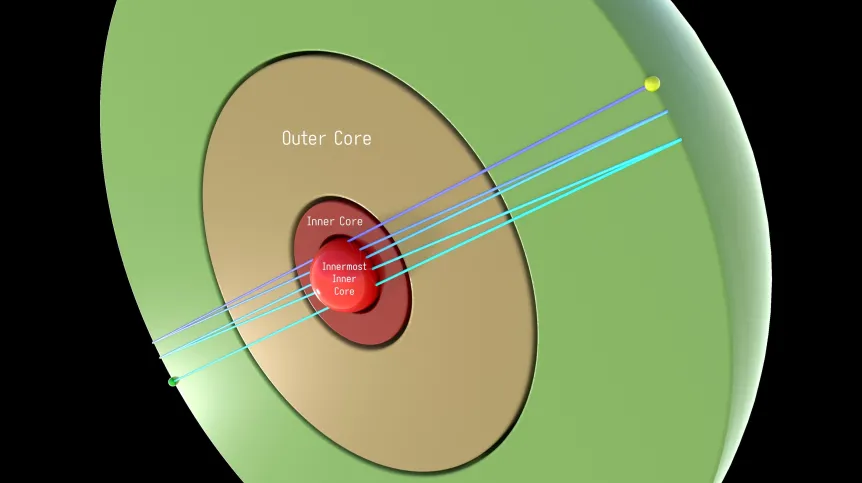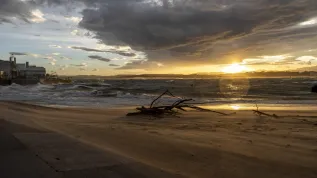
The inner core of the Earth most likely contains an iron ball with a radius of 650 km. The discovery will affect the concepts of the formation and evolution of the Earth, Australian scientists report in Nature Communications.
Studying the centre of the Earth is crucial for understanding the formation and evolution of planets. The presence and size of the innermost core has been a topic of scientific theories, but research has been hampered by the lack of adequate research tools.
Over 20 years ago, Professor Adam Dziewoński and Don Anderson developed an image of the Earth's interior based on a detailed study of the great earthquake that took place in Alaska on March 27, 1964. They determined that the Earth's core is not uniform, but instead consists of a solid inner core, composed mainly of iron and nickel, which is surrounded by a liquid outer core. Australian scientists refer to this work in their publication in Nature Communications.
Thanh-Son Phạm and Hrvoje Tkalčić collected data from existing probes to measure the different bounce times of seismic waves produced by earthquakes. They were the first to observe waves bouncing as much as five times along the entire diameter of the Earth.
Professor Stanisław Lasocki from the Institute of Geophysics of the Polish Academy of Sciences said: “Reverberation is the process of multiple wave reflection. The phenomenon is well known in acoustics, but also in seismology.
“The seismic energy of large earthquakes is so great that seismic waves can circle the Earth many times. The basic types of waves are direct waves and their reflections from the boundaries between layers of the Earth's interior. But very long-period surface waves (R,L) can go around the Earth several times after a large quake. I think that these waves caused reverberations between the surface of the Earth, the boundary between the outer part of the inner core, and this newly discovered iron ball.”
Professor Jolanta Nastula from the Space Research Centre of the Polish Academy of Sciences said: “The paper is interesting. The scientists used a network of seismograph observations from the global network and showed the exact structure of the Earth's interior. We found out that the radius of the iron ball is 650 km and that it has a non-uniform distribution - this is a new finding. Since the Earth was formed as a result of rotation, now it would be necessary to consider whether and what is the influence of the this nucleus in the inner core on rotation.”
Find out more in the source material: https://www.nature.com/articles/s41467-023-36074-2 (PAP)
Author: Urszula Kaczorowska
uka/ agt/ kap/
tr. RL













